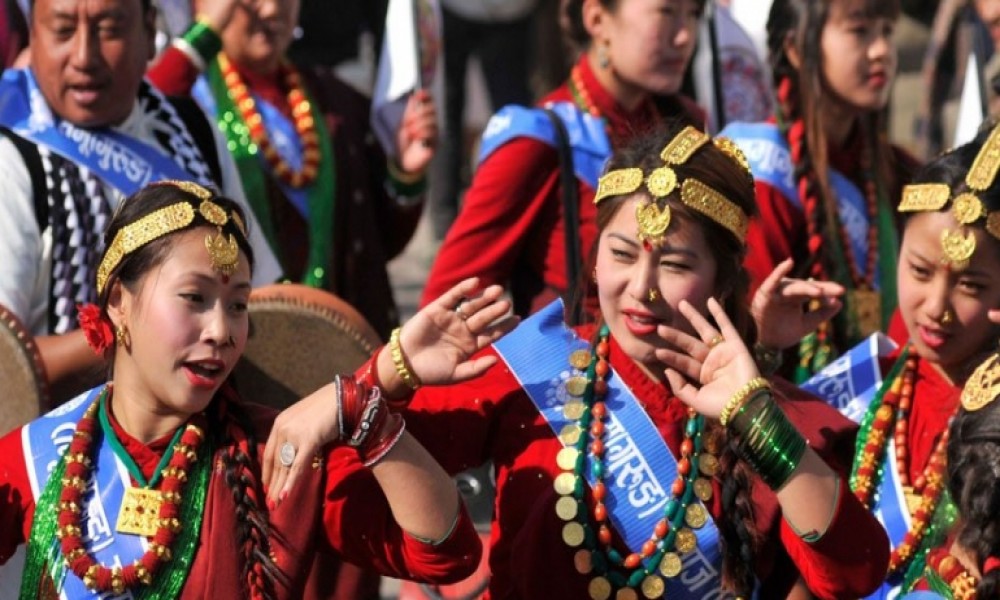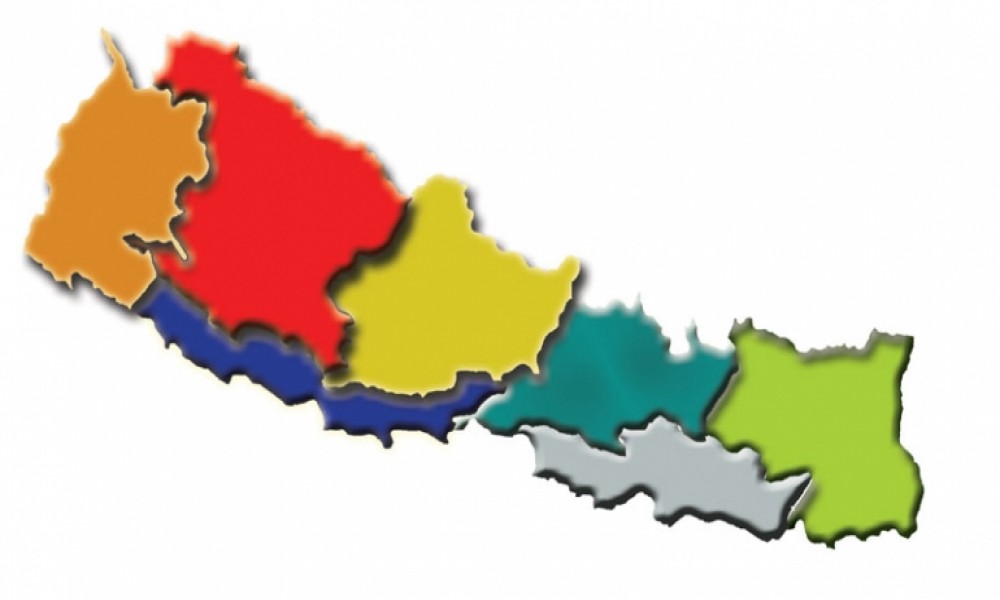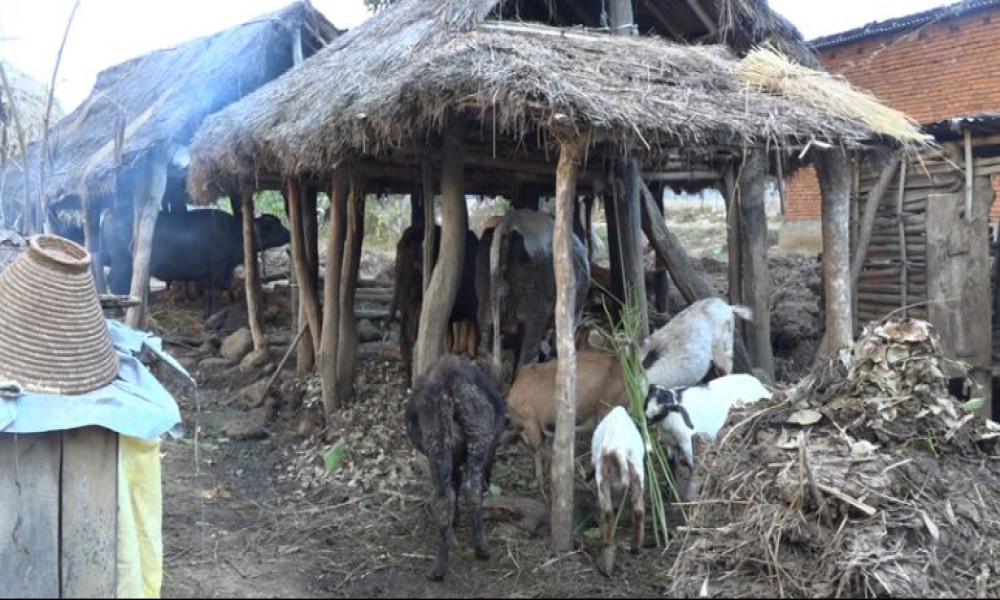Lhosar is the festival of bidding goodbye to the old year and welcoming to the newer one. But this festival is taken as the occasion of uniting the family members as well as with the wider kith-and-kin. Sociologist, Prof. Dr. Om Gurung, says, 'This festival has provided the opportunity to be familiar among the wider Gurung community members and increase bond among them, at the same time, boosted the 'oneness' and 'we' feelings'."
According to him, there is increasing trend of observing festival with much fanfare. This festival typically is the family festival. In which, members visit to their kith-and-kin, extend well-wishing etc.
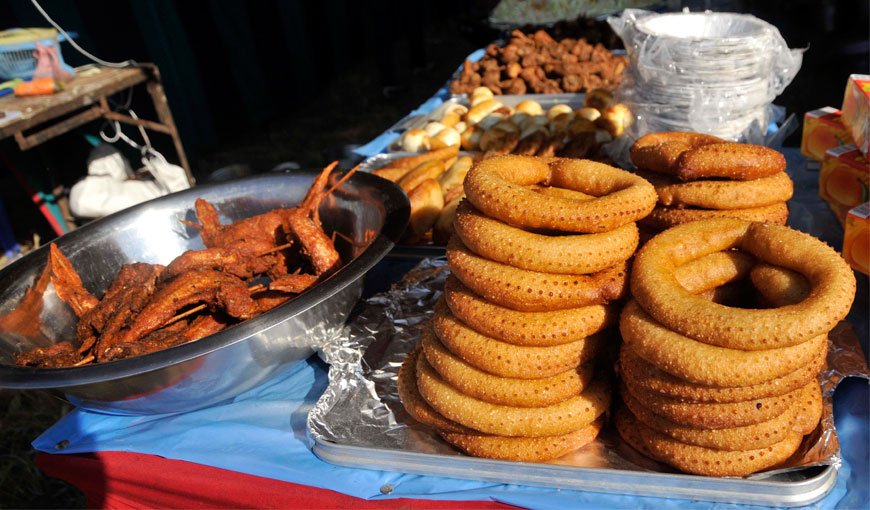
Origin
Loshar is a derived from Tibetan language. The term 'Lho' means 'Year' or the age of the person, while the term 'Sar' means 'New'. The Lhosar therefore stands to indicate a new year. Besides Tamu-Gurung indigenous peoples, other Himalayan indigenous peoples in Nepal such as Tamang, Sherpa, Hyolmo and so on also use the term Lhosar to indicate the New Year.
There are 3-kinds of Lhosar. The first and the oldest Lhosar festival is known as 'Tol-Lhosar'. The term 'Tol' refers to the time-cycle, which is observed during the full-moon of December. This festival is observed by Tibetan residing in the western part of Tibet mainly alongside of Mt. Kailash in Tibet and also indigenous peoples residing in the Himalayas region such as Manang, Humla and also those residing in Bhutan.
The second one is known as Sonam Lhosar. Sonam refers to indicate 'holy', this festival is observed during the full moon day falls in January. This festival is observed by the Tibetans residing whole areas in the eastern Tibet, and observed by Tamang indigenous peoples in Nepal. The statistics puts that largest Lhosar observing community falls this festival observer in the world.
The third Lhosar is known as 'Gyalbo-Lhosar'. This festival is observed during the full moon day in February. The term 'Gyalbo' refers to the 'King'. This Lhosar is usually observed by the Royal family member of Tibet. This festival is observed by the Tibetan residing alongside Lhasa, the capital city of Tibet and in Nepal Sherpa indigenous peoples all across the Himalayas observe this festival.
The new-year is counted by Lhosar observing communities such as Tamang, Tamu-Gurng, Sherpa, Hyolmo, as per the movement of Sun.
Tamu-Gurung indigenous peoples regard full-moon day of December to be the new-year, while Tamang regard full-moon day of January and Sherpa as full moon day of February.
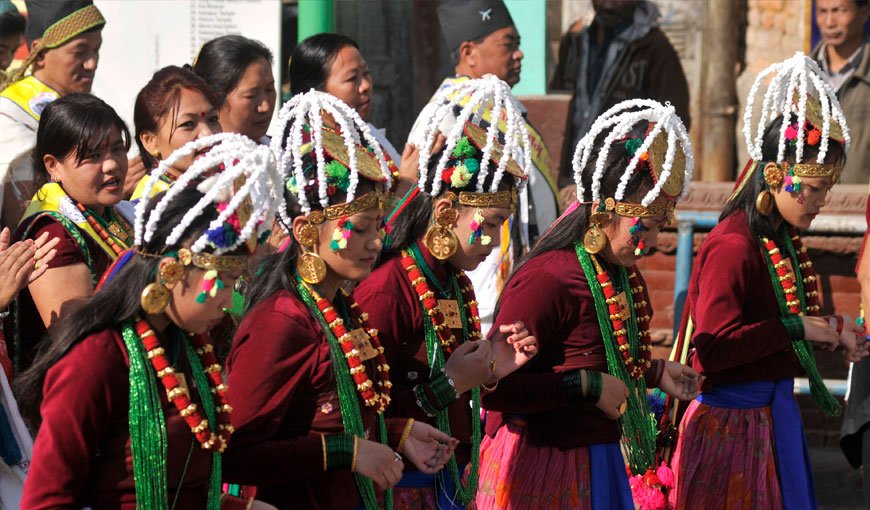
Ritual
On the occasion, Gurung indigenous community members with the help of their priest called 'Khegi' send-away their bad-luck—'Thaso'. If they could not find their Priest—Khegi', they do so on other days. If they find difficulties in finding Khegi on other days as well, they do so with the help of their aged family members. In order to release or prevent from bad luck, priest put turmeric-powder shocked thread around the neck with 9-circle with knot to the male and 7-circle with the knot to the female, while such thread to children is put on the wrist as well. This is believed that if the priest puts thread chanting 'Mantra' they are not attacked by the ghost and the misfortunes. Thus Lhosar is the festival of releasing bad-luck and exchange of well-wishing between and among the kith and kin.
Changing dimension
Lhosar festival has not been only the occasion of entertainment alone, but has been the occasion of ensuring of their rights. The occasion has provided scattered Gurung indigenous community unite politically and make demands. Yet times, Lhosar has been the right-based festival and the festival has provided opportunity to group and stand for the collective identity. Gurung indigenous peoples are one of the racially, religiously discriminated indigenous community in Nepal. The festival to some extend has provided opportunity to Gurung communities residing across country come at one place, get organized and united for the rights and identity.


